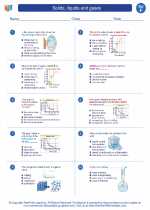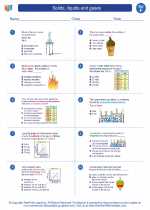Cnidarians: An Overview
Cnidarians are a group of invertebrate animals that include jellyfish, sea anemones, corals, and hydroids. They are known for their distinct features such as tentacles with stinging cells and a radial body symmetry.
Key Characteristics of Cnidarians:
- Radial symmetry: Cnidarians have a body plan that is radially symmetrical, meaning it can be divided equally along multiple planes.
- Tentacles with cnidocytes: Cnidarians have specialized stinging cells called cnidocytes on their tentacles, which they use for defense and capturing prey.
- Two body forms: Most cnidarians exhibit two body forms - the polyp form (typically sedentary) and the medusa form (typically free-swimming).
- Gastrovascular cavity: Cnidarians have a central digestive cavity with a single opening, which functions for digestion and nutrient distribution.
Types of Cnidarians:
There are several major groups of cnidarians, including:
- Jellyfish: Free-swimming medusae with trailing tentacles.
- Sea Anemones: Sedentary polyps with a cylindrical body and stinging tentacles.
- Corals: Colonial polyps that secrete calcium carbonate skeletons, contributing to coral reef formation.
- Hydroids: Small, colonial polyps found in marine and freshwater environments.
Reproduction in Cnidarians:
Cnidarians can reproduce both sexually and asexually. They typically have a complex life cycle involving both polyp and medusa stages. Reproduction can occur through budding, fragmentation, or the release of gametes for sexual reproduction.
Ecological Importance:
Cnidarians play a crucial role in marine ecosystems. Coral reefs, formed by colonial cnidarians, support diverse marine life and contribute to coastal protection. Additionally, cnidarians serve as a food source for various marine organisms.
Study Guide:
- Describe the radial symmetry exhibited by cnidarians.
- Explain the function of cnidocytes in cnidarians.
- Compare and contrast the polyp and medusa body forms in cnidarians.
- Identify the major groups of cnidarians and their respective characteristics.
- Discuss the role of cnidarians in marine ecosystems and their ecological significance.
[Cnidarians] Related Worksheets and Study Guides:
.◂Science Worksheets and Study Guides Sixth Grade. Solids, liquids and gases

 Activity Lesson
Activity Lesson
 Worksheet/Answer key
Worksheet/Answer key
 Worksheet/Answer key
Worksheet/Answer key
 Worksheet/Answer key
Worksheet/Answer key
 Vocabulary/Answer key
Vocabulary/Answer key
 Vocabulary/Answer key
Vocabulary/Answer key
